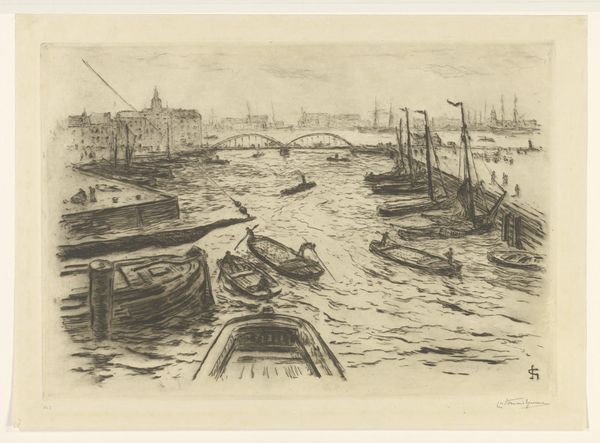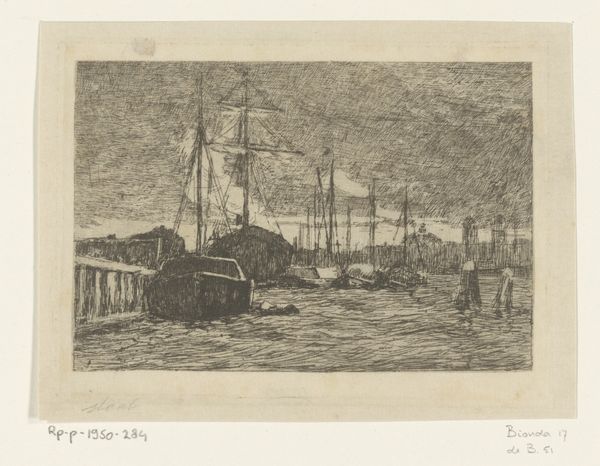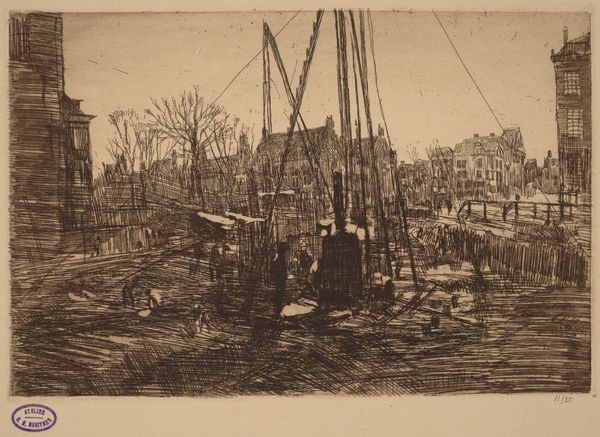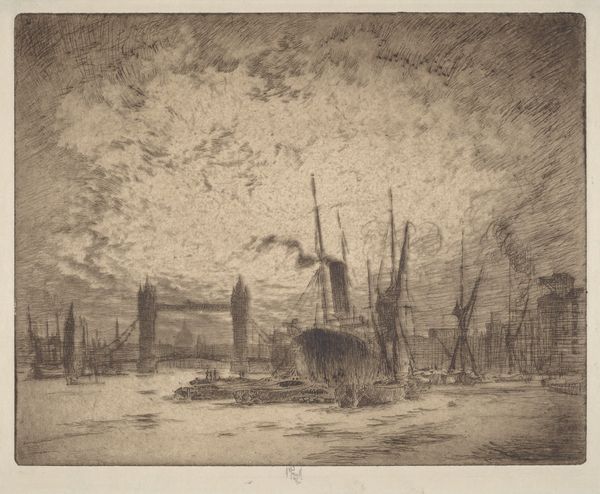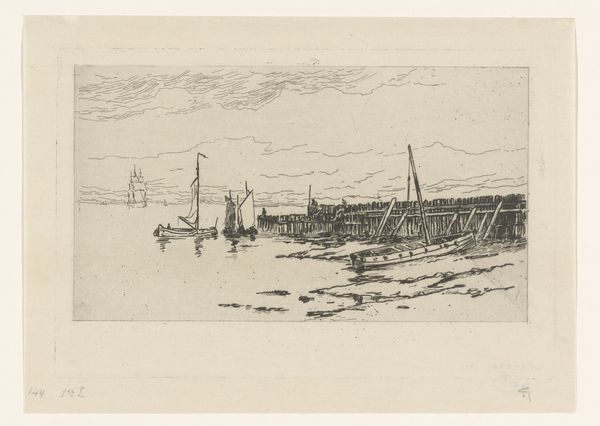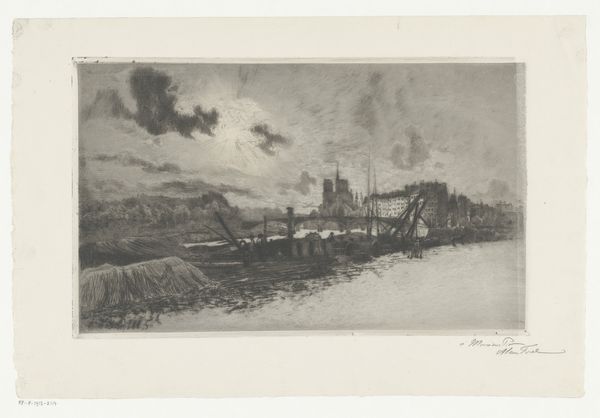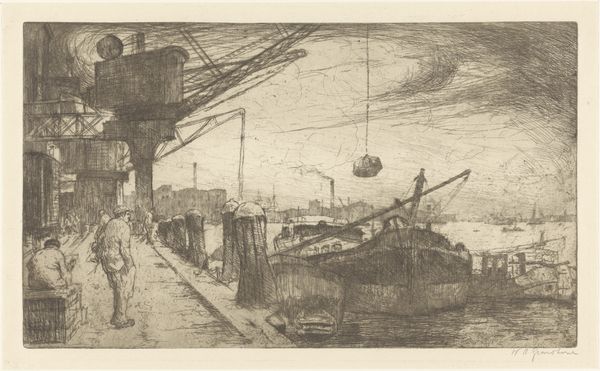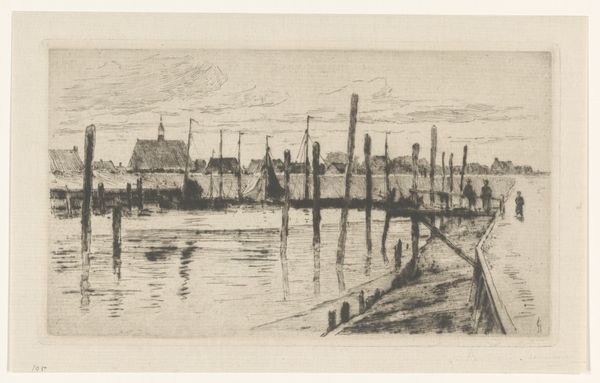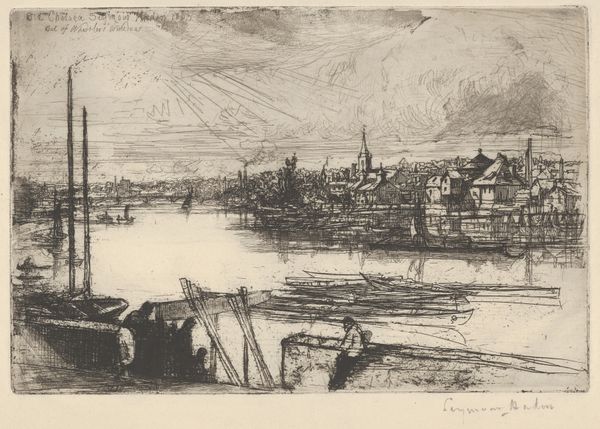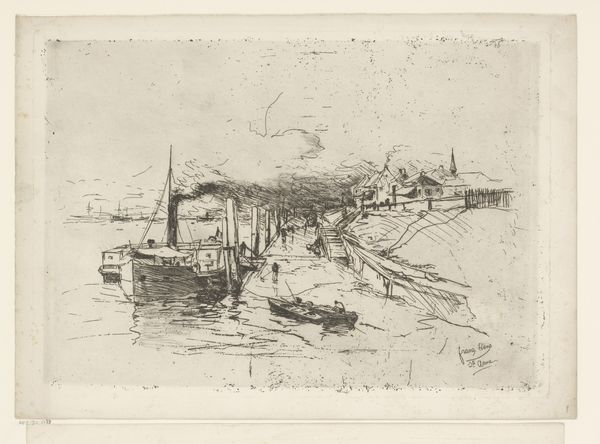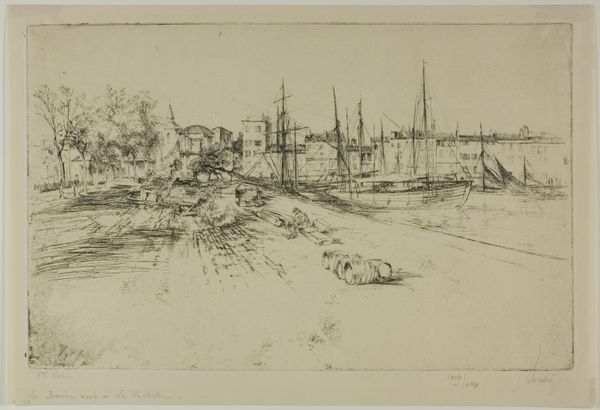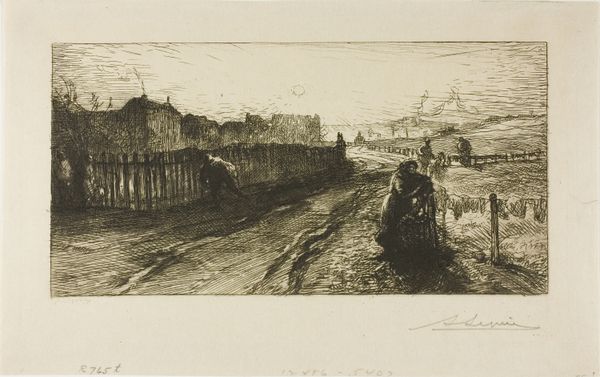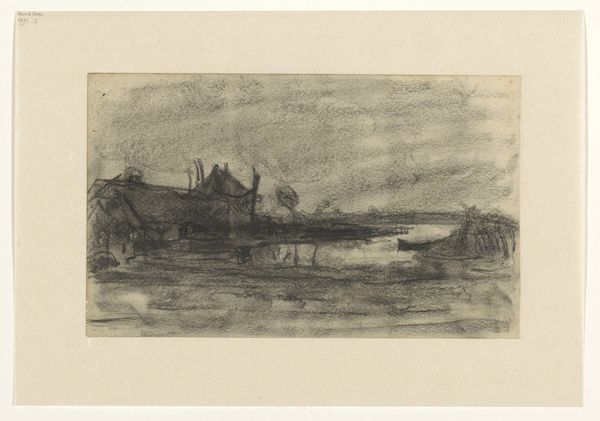
Dimensions: 154 × 233 mm (image); 159 × 238 mm (plate); 212 × 307 mm (sheet)
Copyright: Public Domain
Editor: This is Auguste-Louis Lepère’s "Old Laundry Boats at Grenelle," made in 1908. It's an etching, so black lines on paper, depicting a waterside scene. It feels… industrial and a bit grim, especially with that smoke. What strikes you about this print? Curator: Well, seeing the laundry boats brings to mind the lives of working-class women in early 20th century Paris. Laundries were often staffed by women, frequently immigrants, doing back-breaking labor in poor conditions. This scene, seemingly a simple cityscape, is in fact a critical lens through which to understand class and gender dynamics of the time. Editor: So the scene isn't just a depiction of old boats? Curator: Precisely. Think about it – what stories aren't being shown? Who is missing? The almost hazy, obscured view hints at the labor performed. Do you think Lepère is valorizing this scene, or critiquing it? Editor: I hadn’t considered that angle. The haze, the indistinct figures…maybe it's not glorifying their toil, but drawing attention to their obscured existence. Curator: And that connects with broader themes of Impressionism and Art Nouveau, movements grappling with the social impacts of industrialization. This era, so-called Belle Époque, saw incredible inequities. This wasn’t a ‘beautiful era’ for everyone. Editor: Right, like there's beauty but also harsh reality coexisting. I hadn’t pieced together those connections before. It definitely makes me look at the piece with new eyes. Curator: Exactly. By thinking about whose stories get told and how, we can unpack layers of meaning that might otherwise remain hidden. Editor: It is incredible how one image can uncover entire power structures within society. Curator: That's the power of art history as a social dialogue. It changes how we see.
Comments
No comments
Be the first to comment and join the conversation on the ultimate creative platform.

